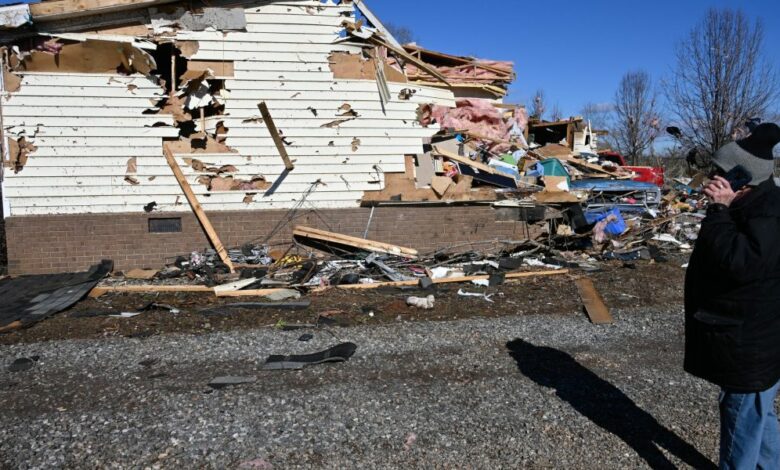$22 trillion worth of the housing market is at risk of severe or extreme damage from environmental threats


Climate risk is a $22 trillion problem for the housing market—and it’s only set to keep growing. Almost 44.8% of homes across the country, worth nearly $22 trillion, are staring down “at least one type of severe or extreme climate risk,” according to a newly released Realtor.com report which considered flood, wind, wildfire, heat, and air quality issues. That represents nearly $22 trillion of housing wealth, concluded the authors, economist Jiayi Xu, economic data manager Sabrina Speianu, and chief economist Danielle Hale.
More so, 40.4% of homes, worth $19.7 trillion, are at severe or extreme risk when it comes to heat, wind, and air quality. “Climate risk is a big deal,” Xu said in a separate release. “It can impact home values, insurance costs, and the overall stability of a housing market.”
And in some cases, “in areas with high climate risk and lower home prices, people are tolerating these risks in exchange for more affordable housing,” Xu said.
The share of homes threatened by flood and wildfire risk is smaller than any other weather or environment-related risk. Heat risk is the big one, affecting the largest percentage of homes across the country, roughly 32.5%, valued at nearly $13.6 trillion, holding a severe or extreme risk of heat exposure. Miami has the highest value of homes at “severe or extreme risk,” but 17 other metropolitan areas are also at risk. That includes areas in Florida, Texas, South Carolina, Louisiana and Virginia, according to the report.
Then there’s wind, or hurricane risk, which affects around 18.1% of homes worth almost $7.7 trillion. And yet again, Miami faces the most substantial risk, in terms of its total value of homes. The states threatened by hurricane risk are similar to those threatened by the heat, aside from Virginia.
Air quality risk, which doesn’t seem to be discussed much as a threat to homes, can actually impact 9% of homes in the nation (so almost $6.6 trillion). “San Francisco holds the highest total value of homes at severe or extreme air quality risk, whereas four metros from California and Washington are all at severe or extreme air quality risk,” the report reads.
Flood risk comes next, with about 6.6% of homes facing severe or extreme risk of flooding and flood damage. Those homes are worth almost $3.4 trillion, and they’re largely concentrated in Miami, given the city has the “highest total value of homes at severe or extreme risk of floods.” That being said, New Orleans comes up top in terms of the share of property value at risk.
And of course, there’s wildfire risk, which we all know is largely a California problem. Roughly 5.5% of homes, worth $3 trillion, are at severe or extreme risk of fire damage; almost 39.1% of “high-risk” homes are in California; those are worth $1.7 trillion. And the highest total value of homes threatened are in Los Angeles.
Putting to one side the more serious and dire consequences, such as the destruction of homes and peoples’ lives, “the issues are whether you can get access to affordable insurance and how much the costs will increase,” Xu said.
Fortune has previously reported that uninsurable properties are a serious factor further elevating an already seriously unaffordable housing market marked by high home prices and high mortgage rates. Last year, extreme weather cost the country at least $23 billion (there were 23 major weather events that caused at least $1 billion in damage). And “the severity and frequency of major weather events, unfortunately, is likely to go up,” a CoreLogic executive previously told Fortune. California and Florida homeowners have already felt the pain. The former saw property insurers cap the number of policies they write or refuse to write new policies; the latter saw multiple insurers simply flee.
February was also the second month that inflation was “sticky,” refusing to come down further to the Federal Reserve’s 2% target, which indirectly means that mortgage rates will be higher for longer. Just last week, Fed chair Jerome Powell testified to Congress that soaring insurance costs are one of the key reasons that inflation is just, well, sticking around. “Insurance of various different kinds—housing insurance, but also automobile insurance, and things like that—that’s been a significant source of inflation over the last few years,” he said. More specifically, with a focus on housing, Powell said: “In the longer term, companies are withdrawing from writing insurance in some coastal areas…It’s a significant issue.”
Source link




